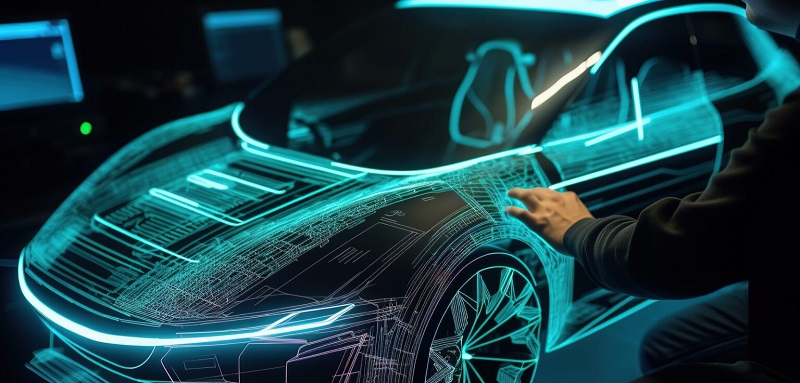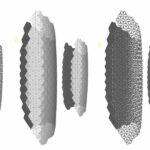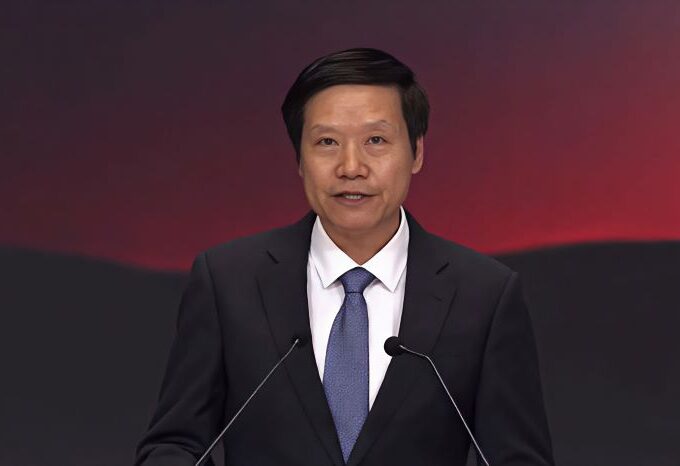In today’s automotive industry, a wave of technological innovation is sweeping through at an unprecedented rate. We are witnessing the gradual transformation of the modern vehicle from a traditional mechanical construction to an intelligent mobile device with advanced software technology. This change has not only transformed the look and performance of vehicles but has also profoundly reshaped our driving experience and expectations.
The market size of software-defined vehicles (SDV) is growing rapidly. According to statistics, the SDV market size has already reached $35.6 billion in 2022, and this figure is expected to jump to a staggering $210.88 billion by 2032, growing at a CAGR of 19.47%. This figure not only reveals the huge potential of the automotive industry but also highlights the urgent need of consumers for a smarter and more connected driving experience.
As the popularity of SDVs increases, so do consumers’ demands for in-vehicle experiences. They expect more than just basic vehicle functionality, but a more personalized, convenient, and entertaining driving environment. Against this backdrop, automakers face a huge challenge: how can they quickly and effectively deliver an in-vehicle experience that meets consumer expectations?
According to the latest results from JD Power’s Vehicle Performance Execution and Layout Survey show a significant drop in consumer satisfaction with cars. This is the first time this has happened in 28 years, and it demonstrates that manufacturers still have a way to go in terms of understanding and meeting what owners want from their vehicles. Owners want their vehicles to not only have advanced technologies, but those technologies must be usable, useful, and of high quality.
To meet this challenge, automakers are turning their attention to field-programmable gate arrays (FPGAs). This flexible and powerful technology offers the automotive industrial solution to meet changing environmental and consumer demands.
FPGAs are particularly useful in automotive infotainment systems. Today, a best-in-class in-vehicle experience means seamlessly integrating a variety of smart technologies such as Wi-Fi, Bluetooth, GPS, and streaming audio and video. To enable these features, higher-quality displays need to be configured inside the car, including the central entertainment center, instrument cluster, flat-screen displays, and rear displays. FPGAs are ideally suited to address these multi-display connectivity and processing requirements, offering flexible connectivity options and adaptive processing capabilities.
At the same time, consumer expectations for automotive displays are rising. They want to see high contrast and vibrant colors comparable to smartphones and TVs. To meet these expectations, most manufacturers have opted for liquid crystal displays (LCDs). While organic LEDs (OLEDs) are seen as a superior choice for displays due to their excellent contrast ratio and pleasing image quality, they are not suitable for automotive environments, which are often exposed to harsh lighting conditions and a wide range of temperatures, as well as needing a longer lifespan. In contrast, LCDs are not only available in a wide range of sizes and resolutions at affordable prices but also perform well in automotive temperature environments.
To further enhance the viewing experience, LCD screens use localized dimming technology. This technology enhances image visibility by increasing contrast. It achieves localized control of brightness and contrast by dividing the backlight into multiple zones. For example, in areas that need to be displayed darkly, the local dimming algorithm reduces the intensity of the backlight in that area, darkening the corresponding pixels, while for areas with bright content, the intensity of the backlight is increased to improve visibility.
Local dimming technology can be implemented in two different ways: full array and sidelight. Full-array localized dimming provides more precise control and better contrast and black levels. It uses an LCD panel with a series of LEDs behind it and is divided into multiple zones. While increasing the number of zones can improve performance, it can also make the design more complex and costly. Therefore, manufacturers usually need to choose the right number of zones based on product positioning and cost considerations. Side-light localized dimming, on the other hand, involves placing LEDs at the edges of the display panel and using light guides or diffusers to distribute light evenly across the screen. This method is less costly but does not achieve the same high-quality results as full-array local dimming.
While local dimming technology is critical to improving the quality of infotainment systems, it is also a computationally intensive feature that can be challenging to deploy. Local dimming algorithms must be able to monitor changing lighting conditions display content in real time and adjust brightness, contrast, and backlighting accordingly. In addition, glare reduction is a key factor, as glare from external light sources, such as sunlight or the headlights of an oncoming vehicle, can affect the visibility of the display. Even under the most unfavorable lighting conditions, local dimming technology can optimize image quality and improve visibility.
As local dimming-based displays become an important part of infotainment systems and the in-vehicle experience, FPGAs serve as a unique and highly compatible tool to meet these newfound technological needs. FPGAs (field-programmable gate arrays) are reprogrammable and customizable integrated circuits that are ideally suited for implementing local dimming functionality in infotainment systems. They have real-time high-speed processing capabilities to analyze and process display content, adjust backlight areas, and control brightness. In addition, FPGAs are equipped with the necessary computing power and high-speed I/O interfaces to handle the complex algorithms and computational tasks required for local dimming. They can also allocate additional hardware resources for local dimming operations, providing reliable and resilient performance to withstand harsh environmental conditions such as temperature variations and vibration. In addition, FPGAs feature a rich combination of I/O interfaces to support a variety of LED displays, including LVDS, eDP, 8.1 Gbps DisplayPort HBR3, and 4K displays supporting various resolutions and regions.
Due to the inherently adaptable nature of FPGAs, they also enable supply chain flexibility at the system and component level. This enables manufacturers to flexibly adapt to the needs of different vehicle models and configurations and scale vehicle production. In addition, as the in-vehicle experience continues to evolve and become more complex, the programmability of FPGAs allows developers to easily implement new algorithms, control strategies, and enhancements. This flexibility also allows developers to choose from a wider range of LCD and LED suppliers, further demonstrating how FPGAs can be scalable to meet a variety of customer needs, algorithm implementations, and performance requirements.
FPGA solutions from companies such as Lattice Semiconductor are becoming effective tools for implementing local dimming in automotive infotainment systems. These advanced FPGAs not only provide automakers with the technical support to meet consumer needs but also provide a solid foundation for future vehicle development.
FPGAs will continue to play a key role as SDV vehicles become increasingly popular and consumers demand more in-vehicle experience. They will be a central enabler for top infotainment systems, especially those with local dimming technology, and will be pivotal in the future of automotive manufacturing. By leveraging the flexibility and programmability of FPGAs, automakers will be able to create modern, intelligent vehicles that not only meet consumer expectations but also provide an unrivaled driving experience.












